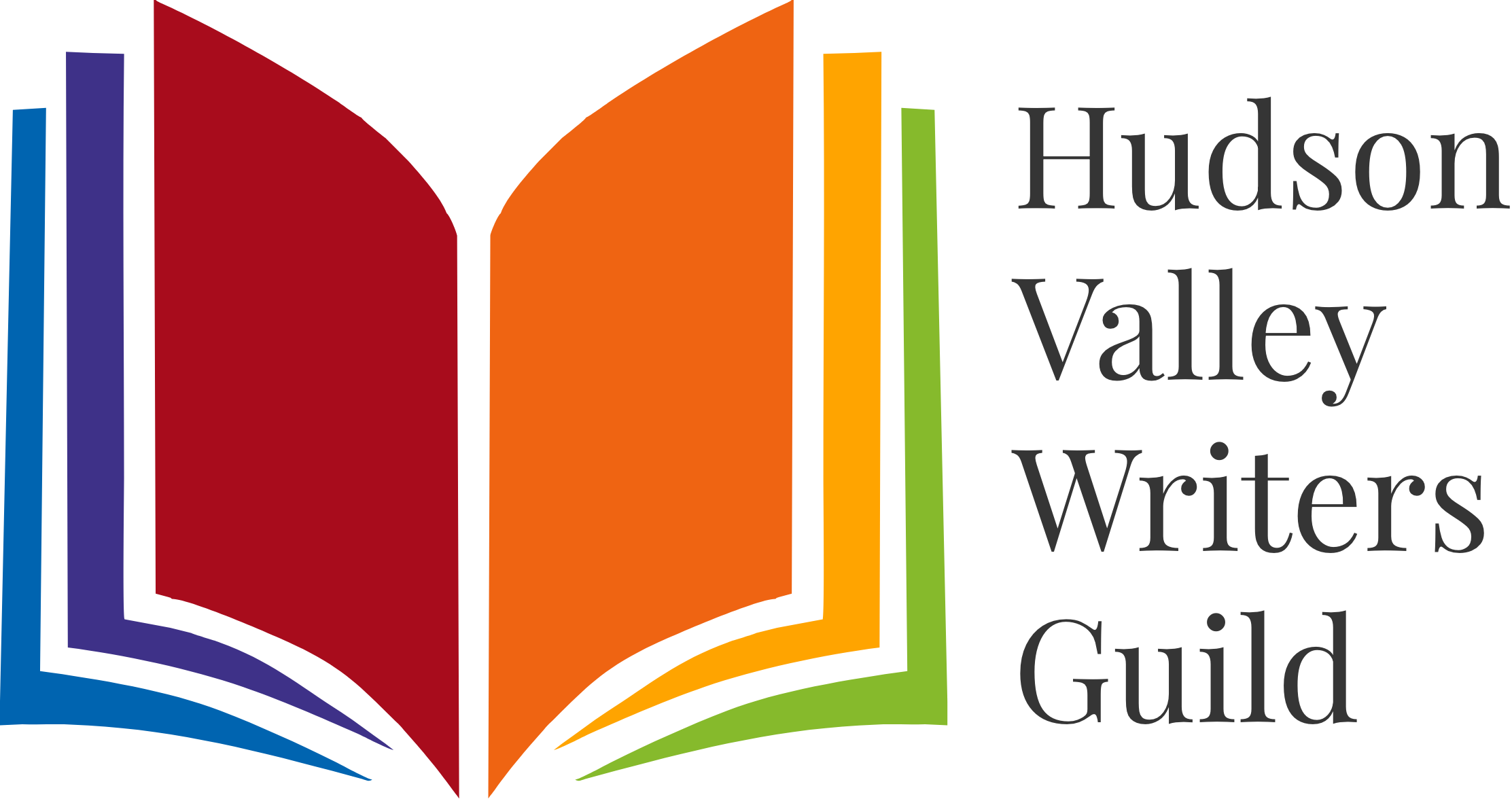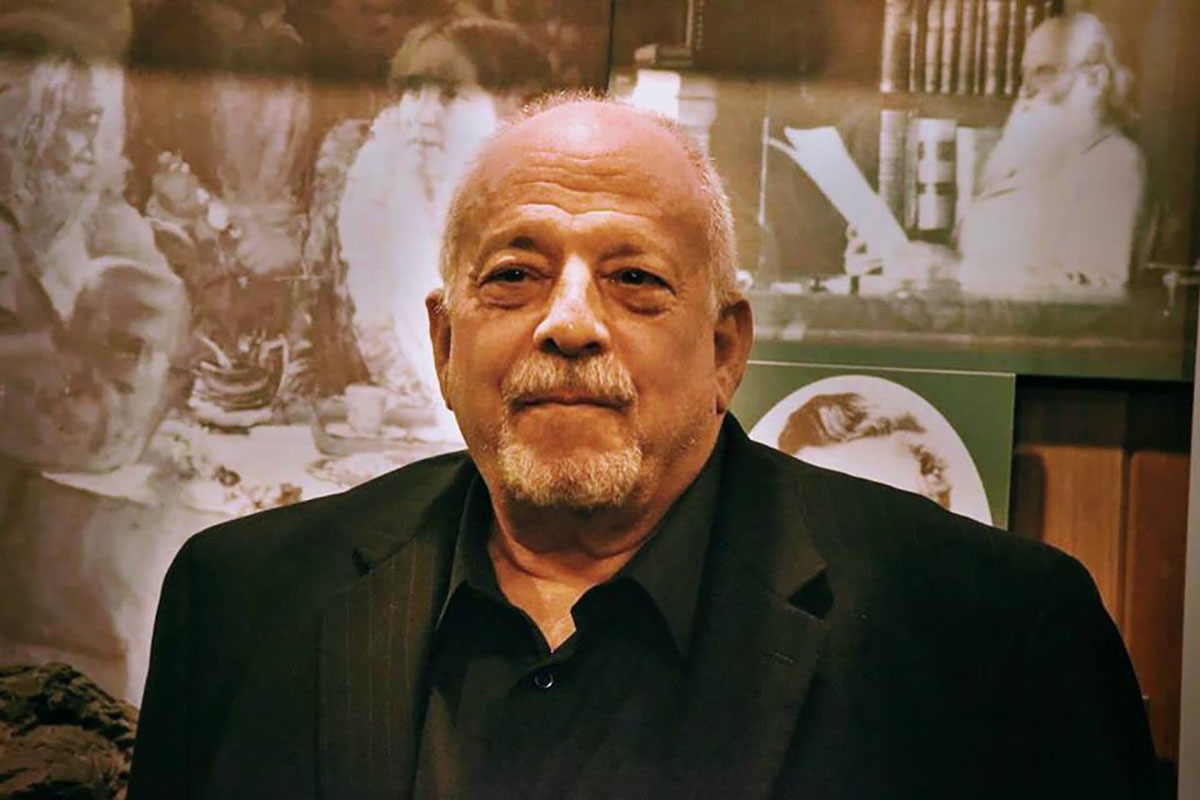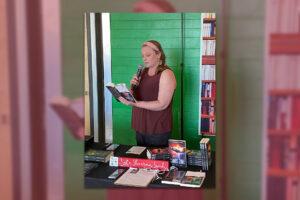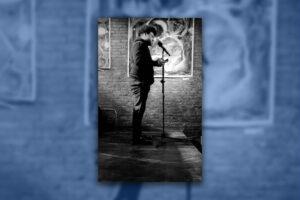Q. Your new collection One Hundred Years Among the Daisies was just published by Stubborn Mule Press. Can you talk about the collection?
So the book was published in 2018, and represents some of my writing from the previous six months to a year before it came out. It happened at the request of Jason Ryberg and the KC poetry crew (Prospero’s bookstore) who also hold court in Belle, Mo — great crowd! – and I was happy to add my voice to their publishing activities in Southeastern Missouri.
I’d been around the block with these folks once or twice, ever since I heard some about the KC poetry scene and Prospero’s from my Beat New England friend Eero Ruutilla, a poet, Naropa alum and organic farmer who for many years had made a practice of what I like to call ‘roots traveling’ up and down the Mississippi in winter months. Eero’s from Illinois, and has some great stories to tell about Vachel Lindsay and Delta Blues country, by the way. He knew the bookstore, recommended I pay a visit.
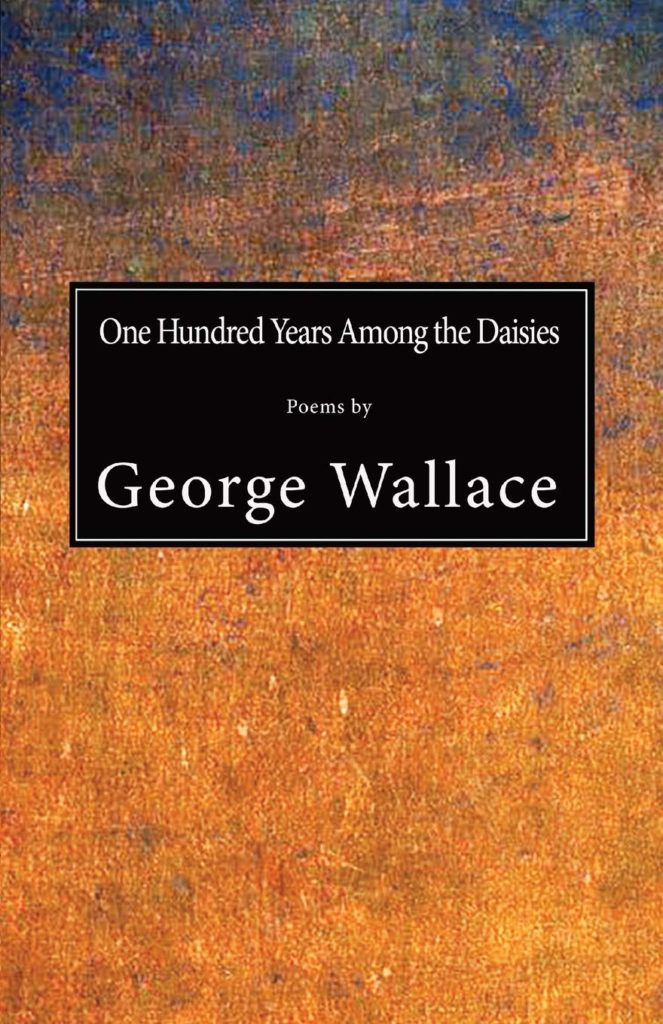 And he was right as rain about the place, Prospero’s is a vortex and a half for poetry.
And he was right as rain about the place, Prospero’s is a vortex and a half for poetry.
I found that out for myself in 2014, the year I tooled up north from Oklahoma with UK poet Geraldine Green and her husband. It was after an appearance at the Woody Guthrie Festival in Oklahoma, and I figured why not see what’s what in Kansas. So we hooked up with Kansas poet Al Ortolani (originally a New York guy), read in towns Pittsburg and Fort Scott, explored the Tall Grass Prairie and Thomas Hart Benton country, and landed at Prosperos.
Terrific experience there, to make a long story short, we hit it off with the Prospero crowd.
Soon after that I had a book out with them thru Spartan Press (a four-poet extravaganza called Beauty Parlors, Trainyards and Everything In Between); and came back to feature at the huge shindig in 2017 they called the Kansas City Poetry Throwdown. That was hammer time, some heavy hitters in town and for me a chance to forge new relationships with Jeannette Powers, Shawn Pavey and others on the scene. Also, I should add, it was the rekindling of my activities with John Dorsey, who by that point was a central figure at the Osage Arts Community in Belle.
Meanwhile Stubborn Mule Press grew out of the Prospero scene and blossomed in Belle, as most people know — and one thing led to another after the Throwdown, including Jason asking me to do a second book with them.
Q. Tell us about compiling the pieces included in the collection, and your experience of publishing this work.
I write a lot, way more than will ever be published, so of course I always have a manuscript or two of recent work ‘waiting in the wings’ for fabulous offers like this one. So when Jason asked, I had a group of material, all very recent, ready to go. It represented several of my prominent pursuits at the time.
- Geographic material from my travels through the US (in particular California, Texas, and KC), Southern Europe (Albania, Macedonia, Bulgaria, Greece), and of course from my base of operations in NYC
- Socio-historical and Anthropological pursuits that haunted me then, too, in particular the search for a deeper understanding of ancient Greek myths and philosophies, including backstories for Orpheus, Jason and Sappho; and more general Hellenic ideas of hospitality and treatment of refugees;
- The political matrix of the time, including not only the challenges of speaking to the divisive and frankly anti-democratic practices of the incoming American administration; an emerging drive to freshly examine the issues of immigration, inclusive amalgamation of immigrant cultures into the American national culture, and the eye-opening Borderland theories of Gloria Anzaldua;
- and of course, the Palette of the Personal as I like to call it, that rich complicated soup of available materials bricolaged from my actual and imagined experience, from my speculations and from my recollections. The chance landscapes of the descriptive or narrative moments as they revealed themselves to me.
My goal was to minimize the cacophony and maximize the burbling symphonic integration of all the subjects and themes that arise naturally from experiencing the multiplicity of life as it happens to us, and as we happen to it.
Q. The pieces in this collection are Whitmanesque, but also very jazzy and city inspired. Can you talk about this eclectic marriage?
Well you’ve nailed two of the most important parts of my work, though ‘eclectic’ isn’t the word I’d choose. There’s a lot going on in terms of materials I bring to the palette, but I’d say more important than that is I’m not deliberately trying to juxtapose things, but rather do my version of multidimensional, cubist exploration, an enriched sort of deconstruct/reconstruct portraiture.
But yeah, the jazz and city thing is there, as is the Whitman thing. That’s hardly even something I would call a contrast though, because Whitman was very much a poet of the city, more than just ‘one facet’ of the multitudes he attempted to encompass. He lived, worked, and played in the thick of the action in lower Manhattan — Newspaper Row, the Bowery entertainment district, Five Points, Pfaff’s underground bohemian cellar bar, etc — and was a devotee of the energy and pace of the streets, in all its tumult and crazy charm.
Whitman synthesized out of that his own 19th-century transcendental positivity-conclusions, impossible for us today, and necessarily anachronistic. Any of us writing today could not ignore all that has happened since Whitman walked the streets of New York — world wars, a depression, dada and existentialism, the post-war boom, civil rights, the Beat and Hippy eras, poetry of witness. Oh and did I mention all the craziness of the past thirty years?
As Andy Clausen says, it’d be nice to be positive like Whitman, but given all that, we have a right to sing the blues!
And yet. I am encouraged to believe we retain the capacity to build from and communicate the foundational nature of Whitman-s vision — magic, the energy and positivity, of the city (the world!).
So yes, in subject, my work is often city-related, but not always. In theme, too, city-related at times, but rarely a straightforward Whitmanian viewpoint.
As for the music in the work, ie the cadence, rhythm, energy and flow, well hell yeah — that carries through untamed and raw and jackhammer true. That energy is in Whitman, Ginsburg, O’Hara, and the best of John Reed. Precedes them and outlives them all.
Q. Many of these pieces are politically charged and discuss the polarization that is occurring in this country at this time. I was personally drawn to your immigration poems and the last poem in the collection, For This My Heart The Revolution. Can you discuss how current politics plays a role in your work?
Well it’s no secret that we live in a politically charged time, so much so it would seem impossible for an artist examining a reasonable range of their life experiences and concerns not to tackle some of the great issues of our day. So as an old former hippy and anti-war activist, I’m no exception to that.
Generally as a poet of our era and a member of the ‘fifth estate,’ I consider it one of my roles to bear witness. As artists we have a separate and distinct function in the political discourse. Different from the people operating in the corridors of government and politics, or outside those corridors in the communities of concern. And beyond conventional and unconventional journalism.
There’s nothing new in that — where would we be without Voltaire, Blake, Jonathan Swift? Sinclair Lewis? Woody Guthrie, Will Rogers, and John Reed? Langston Hughes, Simone de Beauvoir? Dylan? Ginsberg? Harold Norse? Or for that matter the more recent TV satirists and parodists like John Stewart or Stephen Colbert?
So yeah, current politics plays a big role in my work. Not that it subsumes my subject matter, or dominate my perspective on what my role is as an artist. Am I a culturalist? sometimes. A counter-culturalist? also, sometimes. Angry, joyous, piqued, stubborn, all that. And loyally, to society that is.
It plays a role indirectly, of course. As a person who attempts to write multi-faceted compositions that engage dimensional complexities and chakra intersections, the political perspective gets as much into the act or artistic creation as the psychic, spiritual, intellectual, emotional perspective.
And it plays a role directly. There are times, as I dial up my ‘search toward topic’ on any given day, I land in the zone of political commentary. And there are issues which land full force in my day to day consciousness, though I might not write about them every day.
I started to speak out in recent years, in particular, during the second Bush administration, camping with Cindy Sheehan outside the Bush ranch, for example, writing works used in Poets against the War activities.
Let’s just say I am deeply committed to writing about issues concerning migrants, immigrants, refugees, exiles and ‘trans-nationals,’ which is what I like to call people with roots in multiple cultures and with legitimate claim to citizenship that goes way beyond the rather arbitrary boundaries defined by national governments.
Not just on the US/Mexico border. Not just the immigrant waves out of southern and eastern Europe in the late 1800s and early 1900s. And not just across Southern Europe today.
But yes, the current horror show which is our government’s demonization of immigrants is a paramount thing, for me, almost in my daily consciousness.
This is one of the reasons I traveled to McAllen Tx, crossed and recrossed the Rio Grande River, met with regional poets to exchange thoughts; this is why I published poems and essays with numerous activist journals across the southwest, and committed my voice to a major book that is coming out soon through Northwestern and edited by Martin Espada, What Saves Us: Poems of Empathy and Outrage in the Age of Trump.
And this is why I’ve appearing at conferences in San Antonio, and doing my small part as a visitor to the cultural concerns of the region to affirm the validity of Gloria Anzaldua’s Frontera. We’re talking about an emergent culture that amalgamates Spanish, Mexican, Aztec and Anglo influences, a culture that is in the process of going forward with so much energy to take its own place in the world cultural landscape. The Rio Grande Valley region ought to be recognized for what it is — future culture.
Walt Whitman, by the way, predicted this, and celebrated its coming. And we are beginning to see contemporary writers and filmmakers step up to the plate — like Sandra Cisneros, Rudolfo Anaya, John Philip Santos, Americo Pardes, Reyes Cardenas, Moctezuma Esparza, and John Nichols, to name just a few.
So it’s all very new and au courant to call this a ‘current event,’ but what happens to displaced people matters and always has mattered, and is recurring in our literary consciousness.
As I learned doing research at Harvard’s Center for Hellenic Studies in Washington, this issue of the relationship between exiles and those who take them in is one from which we can draw insight going back to the Homeric age. The ancient Greeks spoke to this subject directly, and not incidentally, I must say. They were way more advanced than most of us today in their fleshing out of and asking questions about the moral responsibility of host and guest in refugee/exile situations. Anyone who reads The Odyssey cannot help but see that, and in my view anyone who wants to talk with any degree of nuance about the subject needs to go back about 3000 years and start reading what people had to say back then.
George Wallace is writer in residence at the Walt Whitman Birthplace, writing professor at Pace University in Manhattan, and author of 34 chapbooks of poetry in the US, England, Italy, India, Albania and Greece. Editor of Poetrybay.com and co-editor of Great Weather for Media, he travels internationally to perform his poetry and lead poetry writing workshops. In 2003 he was named first poet laureate for Suffolk County, LI NY. In 2015-16 he served as the first poet laureate of the national Beat Poetry Festival in Middletown Ct. And in 2017 he was named Grand Prize Winner at the Ditet e Naimit International Poetry Festival in Tetova, Macedonia. A third-generation New Yorker ‘building on the heritage of an immigrant working-class family whose second generation contributed to the vitality of NYC’s mid-century culture, from vaudeville to the world of haute couture,’ he has been a hippy traveler, a Peace Corps volunteer, a record store clerk, a newspaper journalist, and an active duty officer with the USAF medical service.
